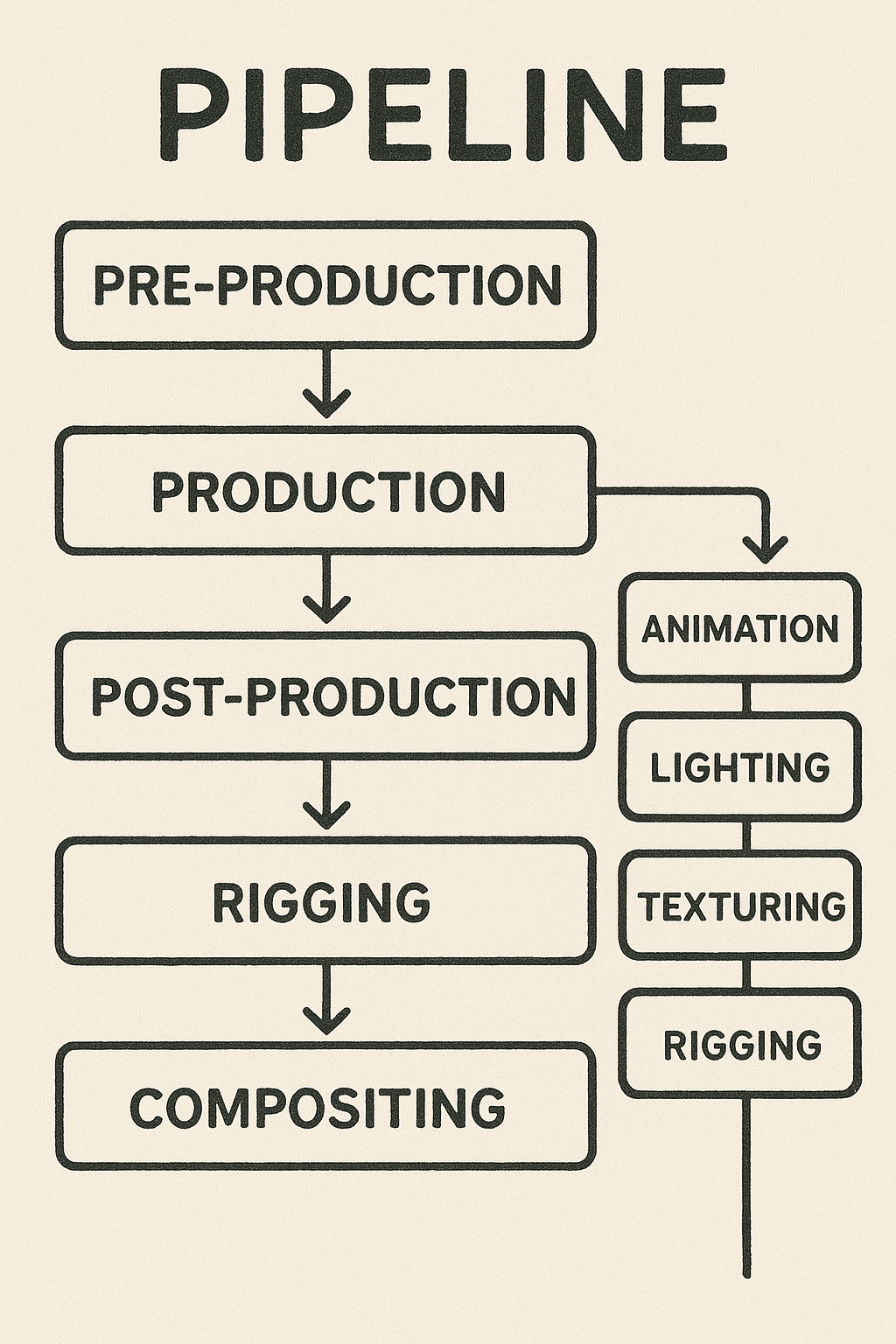
Animation Pipeline Explained
Animation is not just about moving drawings or 3D models—it’s a structured, step-by-step process that transforms an idea into a finished animated film, game cinematic, or commercial. This process is called the animation pipeline, and it ensures that creativity, technology, and teamwork come together smoothly to deliver high-quality animation on time.
What is the Animation Pipeline?
The animation pipeline refers to the workflow or sequence of stages that animation studios follow to produce an animated project. Much like a factory assembly line, each stage focuses on a specific task, handled by specialized teams, and all phases connect to deliver the final product.The pipeline can vary depending on whether it’s 2D animation, 3D animation, or game animation, but the fundamental stages remain similar.
Key Stages of the Animation Pipeline
-
Pre-Production
The planning phase where concepts, scripts, storyboards, and character designs are created.Helps visualize the storyline and set the artistic style before production begins.
- Production
The main creation stage where animators bring characters, environments, and movements to life.In 3D animation, this includes modeling, rigging, texturing, lighting, and animating.In 2D, this involves drawing, clean-up, and digital inking. - Post-Production
The final stage where visual effects, sound design, voiceovers, editing, and rendering are added.Ensures the animation looks polished, immersive, and ready for delivery.
Why the Animation Pipeline Matters
Without a structured pipeline, projects risk delays, inconsistent quality, and miscommunication between teams. The pipeline creates clarity, efficiency, and collaboration, making sure every department knows their role and deadlines.
Pros of Using an Animation Pipeline
- Organized Workflow – Breaks down complex projects into manageable steps, ensuring clarity and consistency.
- Time & Cost Efficiency – Reduces wasted effort by planning tasks and dependencies in advance.
- Collaboration Boost – Keeps writers, animators, sound designers, and editors aligned on one vision.
- Quality Control – Provides multiple checkpoints to refine and improve output before final delivery
- Scalability – Makes it easier to handle large projects with multiple episodes, assets, or game cinematics.
Thumbnail
A modern, sleek thumbnail could feature a flowchart-style graphic showing the three stages: Pre-Production → Production → Post-Production, with icons representing storyboards, 3D models, and editing software. A background of a vibrant animation studio desk—with a drawing tablet, character sketches, and a rendered 3D model—would make it visually engaging while clearly reflecting the concept of an animation pipeline
Conclusion
The animation pipeline is the backbone of professional animation production. By following this structured process, studios can transform raw ideas into polished animations while saving time, cutting costs, and ensuring consistent quality. Whether for films, TV, games, or marketing, understanding the pipeline is crucial for anyone entering the animation industry.

